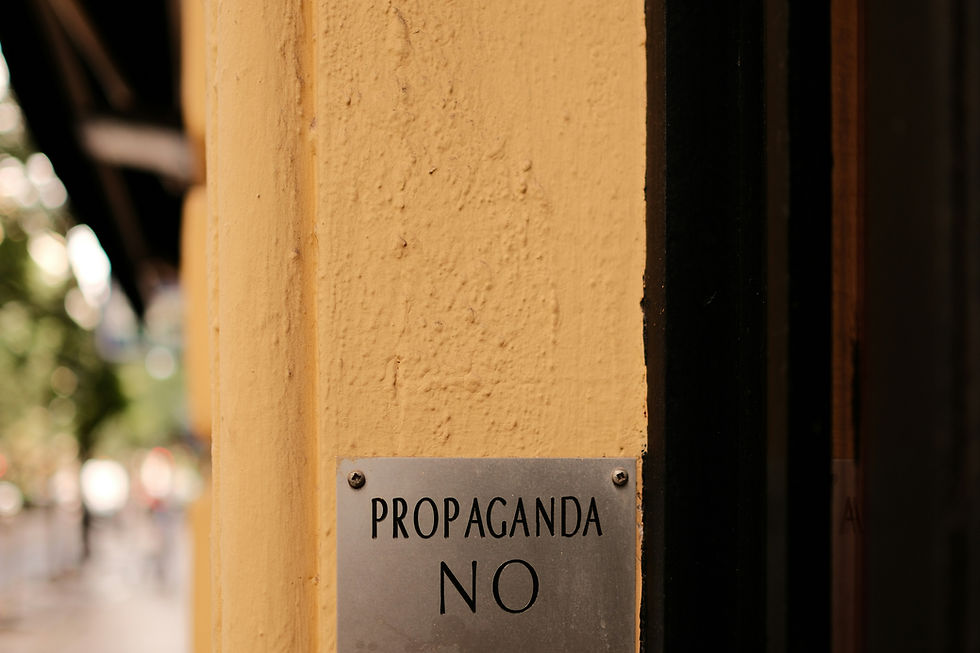A hopeless mix of misleading narratives and plain old fakes
- Res Publica

- May 2, 2023
- 3 min read

If anything, the Kremlin’s propagandists sure are persistent. They have been trying to deflect blame for Russia’s unprovoked war of aggression against Ukraine since day one and last week was no exception. Several attempts trying to pin the blame on the US, NATO, and others stood out.
First, the evergreen plot that Russia had no choice but to invade Ukraine in order to stop a supposed US-led attack on Russia. This time outlets went as far as to claim that Russia stopped World War III from breaking out. This is a recurring pro-Kremlin disinformation narrative about an aggressive US planning to attack Russia, aiming to portray the country as a victim and deflect any responsibility for Moscow’s unprovoked military invasion of Ukraine and illegal annexation of Crimea back in 2014. Contrary to keeping WWIII from happening, Putin’s decision (opens in a new tab)to invade Ukraine has started the largest military conflict in Europe since WWII.
In a similar vein, Sputnik’s Polish outlet tried to frame the United States as the main beneficiary of the ‘Ukrainian crisis’ because ‘the American ruling class is terrified of the possibility of Moscow strengthening its global role’. This is another long-standing pro-Kremlin narrative that aims to frame Russia’s war against Ukraine as a confrontation with a Russophobic and belligerent West.
Yet more spin on the same topic includes alleging that Latvia’s ‘Western masters’ have made the country send its soldiers as ‘cannon fodder to Ukraine’. In the eyes of the Kremlin, pretty much everyone is a US or NATO puppet. This is another age-old disinformation narrative that tries to strip many countries of their agency and paint a black-and-white picture of a supposed confrontation between two big powers – Russia and the US.
If it didn’t happen, just fake it
Also last week, on two separate occasions, Russian information manipulation actors active across several social media platforms got caught promoting fake magazine covers to undermine Ukraine. The first one, deriding Ukraine’s Armed Forces and President Zelenskyy, was supposedly a cover of the Spanish satirical magazine El Jueves(opens in a new tab). The cover was initially shared(opens in a new tab) by a former Ukrainian MP, now defected to Russia, and was quickly picked up by several pro-Kremlin Telegram, VKontakte, and Odnoklassniki channels in Russian. The second, again deriding Zelenskyy, was allegedly published by the British newspaper The New European(opens in a new tab). This was first posted(opens in a new tab) by another Telegram user and later similarly amplified by a number of Telegram, VKontakte, and Odnoklassniki channels.
Both(opens in a new tab) covers(opens in a new tab) were quickly and resolutely dismissed as fake by the Ukrainian Centre for Countering Disinformation(opens in a new tab), as it’s easy to verify whether a magazine ran an alleged cover page or not. That said, two fairly low-scale incidents like this could easily be dismissed as business as usual, if it weren’t for the fact that over the past month or so, there have been several similar incidents involving for example French(opens in a new tab) and Turkish(opens in a new tab) satirical outlets. Compared to other similar incidents from recent times, these two from the past week were not shared as broadly in the Russian information manipulation ecosystem. This might suggest that such manipulation is losing its hoped-for effect on the targeted audience.
More so, producing and distributing fake magazine covers and other types of media is a recurring and evolving tactic in Russia’s efforts to deceive. In its first-ever report(opens in a new tab) on foreign information manipulation and interference threats published this February, the European External Action Service concluded, based on publicly available data, that impersonation techniques are becoming ever more sophisticated. Russian actors particularly use impersonations of trusted organisations, media, and individuals to target Ukraine. They really are throwing everything at the wall, trying to see whether anything sticks. Within the EU and outside it.

Article and pictures first time published on the EUvsDisinfo web page.





Comments